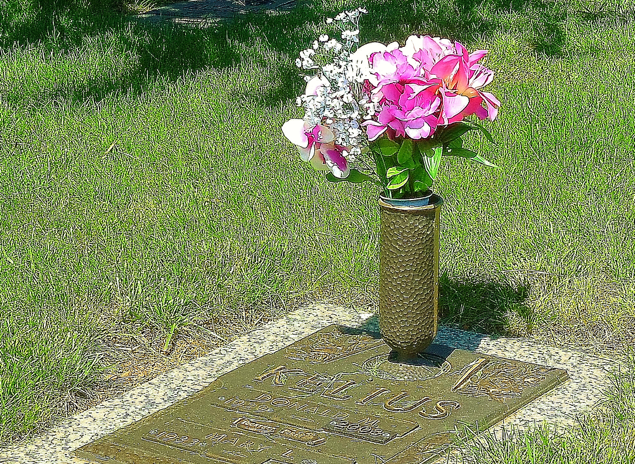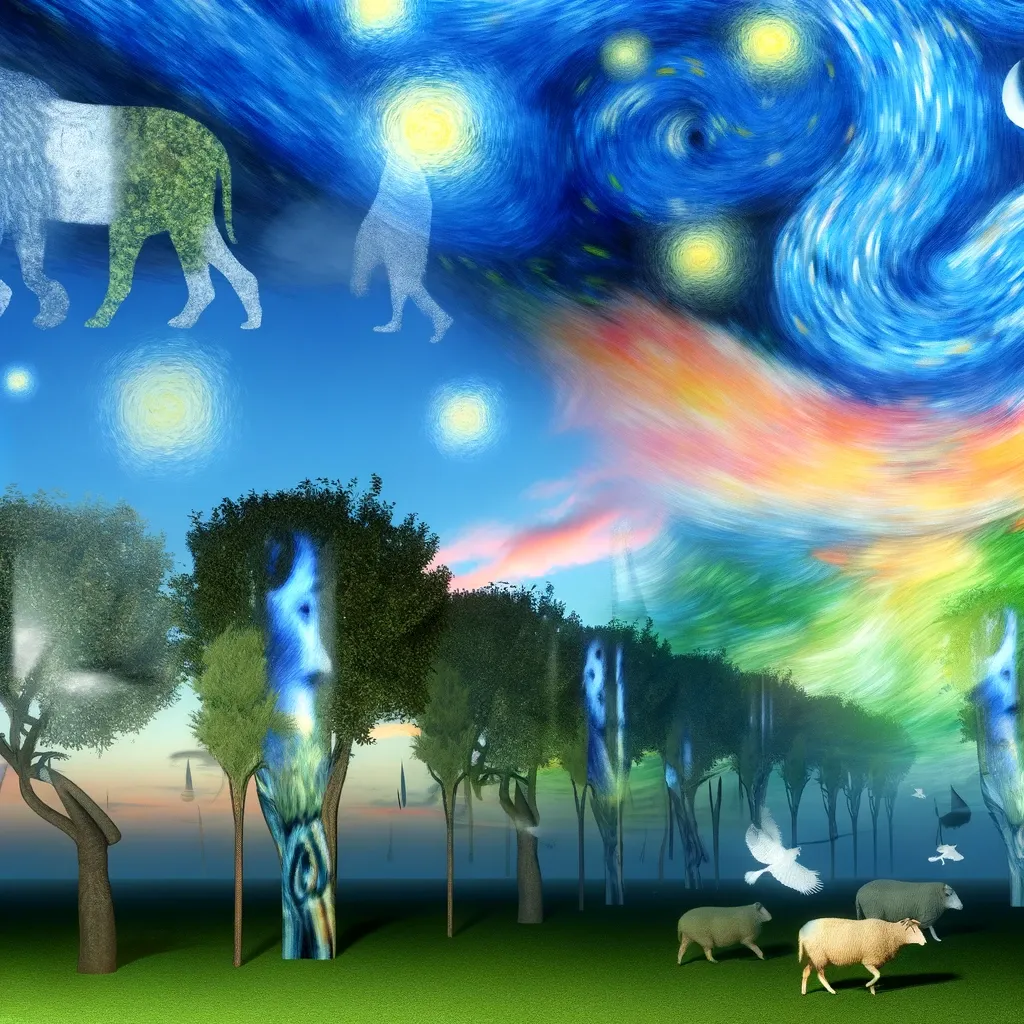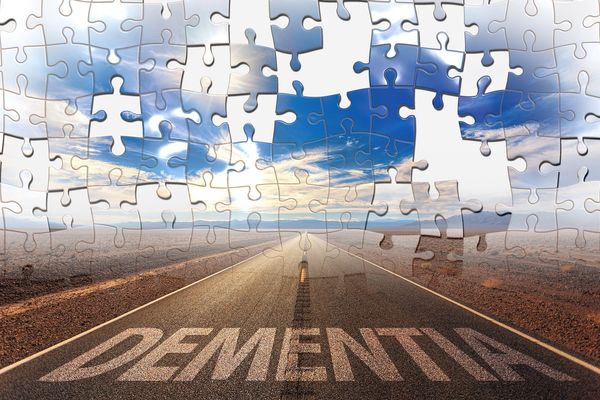Hallucinations Before Death: A Guide for Hospice Care

As death approaches, it is not uncommon for the dying to experience some unusual mental phenomena known as hallucinations. This guide aims to demystify this topic, so that readers can better understand what is happening and how to provide comfort and support to their loved ones. In this guide we will discuss the common types of hallucinations, causes, stages of death, when hallucinations may start, non-visual hallucinations, and what it means if someone experiences hallucinations or near death experiences before death.
But before we delve into these topics, let’s define what a hallucination is. A hallucination is defined as a sensory experience that is perceived without any of the relevant external stimuli being present. It is often a vivid and realistic experience that may include sights, smells, sounds, tastes, or feelings. It is important to note here that hallucinations are distinct from dreams or daydreams, as they may be experienced while awake.
Now that we have a basic understanding of what a hallucination is, let’s explore why it is an important topic to discuss. Hallucinations are often associated with death, and they can be a frightening and distressing experience for the dying person as well as their family and friends.
It’s important for people to be aware of the different types of hallucinations, their causes, and how to best provide support. By equipping yourself with knowledge on hallucinations before death, you will be well-prepared to offer comfort and peace to your loved one during their last moments.
Hallucinations: Common Types & Causes
Hallucinations, a phenomenon defined as perception in the absence of external stimuli, can happen to anyone. But those close to death may experience them more often than others. It is important to understand the types of hallucinations and potential causes to help you better support a loved one undergoing these episodes.
Common types of hallucinations include visual, auditory, olfactory, haptic, gustatory, and proprioceptive, to name a few. Visual hallucinations are the most frequent type, and can manifest in the form of shapes, lights, shadows, and figures that the patient sees with their eyes open or closed. Auditory hallucinations usually involve hearing voices, music, chanting, or buzzing noises. Olfactory and gustatory hallucinations involve smelling and tasting things that are not present, respectively. Proprioceptive hallucinations are feelings of bodily movement or distortions that appear to be real to the person experiencing them.
The causes of hallucinations are varied, but the most common are mental health-related. Neurodegenerative diseases, drug abuse, withdrawal, psychosis, dementia, and delirium can all contribute to experiencing them. Cardiac arrest can also lead to hallucinations, particularly in the context of near-death experiences, where patients report vivid sensory experiences. For someone close to death, it is important to be aware of these potential triggers and take measures to provide comfort and stability whenever possible.
Understanding the Stages of the Dying Process
Death can be a difficult topic to discuss and understand, however it is an inevitable part of life. Knowing the stages of death can help us to prepare ourselves, and be prepared for the journey our loved ones may take when they are facing death.
When facing death, there are many different stages that someone may experience. Each stage can bring with it its own challenges and emotions; however, it is important to remember that death is an individual process, so each person will experience it differently. It is also important to remember that not everyone will experience all the stages, and some may have more intense experiences.
There are six primary stages of death, though not everyone will experience all of them. Each stage can vary in length and intensity, and is unique to the individual. It is also important to note that these stages often overlap with one another.
- Stage 1: Diagnosis - Receiver of diagnosis goes through shock, denial, and disbelief.
- Stage 2: Acceptance/Bargaining - Acceptance of diagnosis or bargaining with others for help.
- Stage 3: Preparation - Person begins to plan ahead, make arrangements, and make peace.
- Stage 4: Reflection - Person reflects on their life and those around them.
- Stage 5: Anticipation - Person becomes anxious/nervous about the near future.
- Stage 6: Death - Person passes away.
It is impossible to predict how long each stage will last, and how each individual will experience them. However, by understanding the stages of death, we can better prepare ourselves for the processes of our loved ones. It is important to remember that death is an individual experience, and everyone will experience it differently.
Changes in breathing are common as someone approaches death. A dying person's breathing may become slower and less regular, sometimes exhibiting patterns like Cheyne-Stokes breathing or producing a rattling sound. These alterations are not necessarily indicators of discomfort for the individual.
Physical Changes in the Dying Person
As the dying process progresses, the body undergoes significant physical changes. These changes can be distressing for family members and caregivers, but it’s essential to understand that they are a natural part of the dying process.
One of the most noticeable changes is weight loss. The dying person may experience significant weight loss due to a decrease in appetite and metabolism. This can be alarming, but it is a common part of the end of life process. Alongside weight loss, fatigue becomes more pronounced. The person may become increasingly weak and tired, making it difficult to perform daily activities.
Changes in skin temperature and color are also common. The skin may become cool to the touch, and the person may experience a decrease in body temperature. This is a natural response as the body begins to shut down. Additionally, the dying person’s breathing may change. Rapid breathing, shallow breaths, or labored breathing can occur, and they may experience Cheyne-Stokes breathing, a pattern of breathing that involves rapid breaths followed by periods of no breathing at all.
Noisy breathing, often referred to as the “death rattle,” is another physical change that can occur. This is caused by the accumulation of mucus in the throat and can be unsettling for family members to hear. Understanding these changes can help family members provide better support and comfort to their loved one during this time.
Managing Physical Pain and Discomfort
Managing physical pain and discomfort is crucial during the dying process. Pain medication can help alleviate suffering, but it’s essential to use it judiciously to avoid over-sedation.
Healthcare professionals should regularly assess the dying person’s pain levels to determine the best course of treatment. Pain medication, such as morphine, can be used to manage pain, but it’s essential to monitor the person’s response to the medication to avoid over-sedation. This ensures that the dying person remains as comfortable as possible without compromising their ability to communicate and interact with loved ones.
Alternative therapies, such as massage, acupuncture, and music therapy, can also be used to manage pain and discomfort. These therapies can provide additional relief and improve the dying person’s overall sense of well-being. Family members can play an essential role in managing the dying person’s pain and discomfort by providing emotional support and helping with pain management. Their presence and reassurance can make a significant difference in the dying person’s comfort and peace of mind.
How & When Hallucinations May Show Up
Hallucinations are disturbances in the senses that cause a person to observe, hear or feel something that is not actually there. Hallucinations before death can have a number of causes and can occur at any stage of the dying process.
End of life experiences often include hallucinations, which can provide emotional support and comfort during this profound time.
Hallucinations in the dying process typically involve visual and auditory stimulus, although smell, taste and touch can also be affected. People may see people who aren’t there, hear voices, and even feel pressure in places where there is no physical contact.
Hallucinations vary in intensity and duration. They can last from minutes to days at a time, and vary from fleeting hallucinations or flashes of images, to complete immersive experiences. They can also appear at different stages in the dying process.
Hallucinations experienced during the early stages of dying, usually a few weeks prior to death, can include seeing family members, hearing music, or whispers in the ear. For some patients, these hallucinations can be comforting, and can provide feelings of reassurance and comfort as they transition to the afterlife.
Examples of Hallucinations Before Death: Cheyne Stokes Breathing
- Seeing family members who have already passed away
- Hearing music or voices that are not present in your current environment
- Feeling sensations as if you are being touched or hugged when there is no physical contact
Many dying persons experience a loss of appetite and a decreased desire for food and drink as death approaches. As a person enters their final weeks of life, hallucinations become more frequent, and may even dominate their experience. Patients may hallucinate even more in the hours or moments before they pass away. These hallucinations may be disorientating and ‘out of body’ experiences, or spiritual visions.
Non-Visual Hallucinations in Dying Patients
Hallucinations are a type of sensory misperception that occurs when an individual incorrectly interprets an internal or external stimulus. Hallucinations can be divided into two main categories: visual and non-visual. Visual hallucinations involve seeing something that isn’t actually there, while non-visual hallucinations involve hearing, feeling, tasting, or smelling something that isn’t real.
Non-visual hallucinations can take many forms, from hearing voices to feeling unseen presences. Oftentimes, these hallucinations can be quite distressing for those experiencing them, which is why it is important to understand why they occur and how to best support the individual.
Pain medications can also play a role in managing symptoms, as they may influence the occurrence of non-visual hallucinations.
Non-visual hallucinations are increasingly common in dying patients, and this is likely due to a combination of physical, psychological, and social factors. Physically, the dying person’s body is likely undergoing numerous changes which can lead to shifts in brain chemistry and function. Psychologically, the individual may be feeling scared, confused, or overwhelmed by the prospect of death, which can cause them to perceive things that aren’t real. Socially, the individual’s environment could be noisy or chaotic, causing heightened awareness and suspicion.
It is important to remember that when someone experiences a non-visual hallucination, it does not necessarily mean that they are going “crazy” or that their mental health is deteriorating. In fact, these types of hallucinations are typically a normal response to the stresses and anxiety associated with the dying process. Therefore, it is important to provide emotional and practical support to the individual as much as possible.
What Does it Mean if Someone Experiences Hallucinations?
Hallucinations are a symptom of advanced stages of a person's death, particularly amongst those who are in hospice care or have terminal diagnoses. While some experience hallucinations due to medications and/or severe pain, for many people nearing death, hallucinations indicate that the end is near.
The presence of hallucinations can be an indicator of delirium, which is a symptom of approaching death. A person may display erratic behavior, confusion, and cognitive impairment caused by dehydration, infections, or organ failure. While hallucinations can appear in many forms − including sights, sounds or smells − they are not real but instead are created by the mind.
For the individual experiencing them, hallucinations can be disconcerting. They may make them feel scared, isolated, and anxious in the final days of life. It is important for caregivers to provide comfort and support during this time. They should stay close to the patient and remain vigilant to address any possible safety concerns.
Caregivers can also talk with the patient and explain that the hallucinations are not real. Attempts at reassurance can help the patient feel calmer and more secure, even if the hallucinations persist. It is also important to consult with a doctor if serious symptoms arise, such as intense confusion or excessive agitation.
In summary, hallucinations before death can indicate that the end of life is near. Although frightening, they are not real and can be comforting in a way, since people often become aware they are near death. Caregivers should provide comfort and support, while consulting with a doctor to ensure the patient’s safety.
Hallucinations before death can be a confusing and overwhelming experience for both the dying individual and their loved ones. It is important to understand the types of hallucinations, as well as the stages of death and when they can appear, in order to be better prepared and provide the best possible support. Non-visual hallucinations are particularly common among those who are in the final stages of their life and may be indicative of an altered mental state. It is essential that loved ones remain present to offer comfort and support when hallucinations occur.
Understanding the emotional and psychological effects of hallucinations before death will help individuals and their families prepare for this complex experience and offer the best possible care during this difficult time.
Coping with the Dying Process
Coping with the dying process can be challenging for family members and caregivers. It’s essential to seek support and guidance from healthcare professionals to navigate this difficult time.
Emotional support is crucial. Family members and caregivers should seek emotional support from healthcare professionals, support groups, and counseling services. Talking about their feelings and experiences can help them process their emotions and find comfort in knowing they are not alone.
Educating oneself about the dying process can help family members and caregivers better understand what to expect and how to provide support. Knowledge can empower them to make informed decisions and feel more in control during this challenging time.
Self-care is also essential. Taking care of oneself physically, emotionally, and spiritually is crucial during this challenging time. Ensuring that they get enough rest, eat well, and take time for themselves can help family members and caregivers maintain their strength and resilience.
Joining a support group can provide a sense of community and connection with others who are going through a similar experience. Sharing experiences and advice can be incredibly comforting and provide practical tips for coping with the dying process.
Supporting Loved Ones
Supporting loved ones during the dying process is crucial. Family members and caregivers can play an essential role in providing emotional support and comfort during this difficult time.
Providing emotional support and comfort can help the dying person feel more at peace and secure. Simple acts of kindness, such as holding their hand, talking to them, and being present, can make a significant difference in their emotional well-being.
Offering practical support, such as helping with daily activities and managing pain, can also be beneficial. Assisting with tasks like bathing, feeding, and administering medication can help the dying person feel more comfortable and cared for.
Respecting the dying person’s wishes and preferences is essential, including their wishes regarding end-of-life care and funeral arrangements. Ensuring that their desires are honored can provide them with a sense of control and dignity during their final days.
Seeking support from healthcare professionals, support groups, and counseling services can help family members and caregivers navigate this challenging time. Professional guidance can provide valuable insights and strategies for providing the best possible care and support to their loved one.
By understanding and addressing the physical, emotional, and practical aspects of the dying process, family members and caregivers can provide compassionate and effective support to their loved ones during this difficult time.
You might also like this article:










